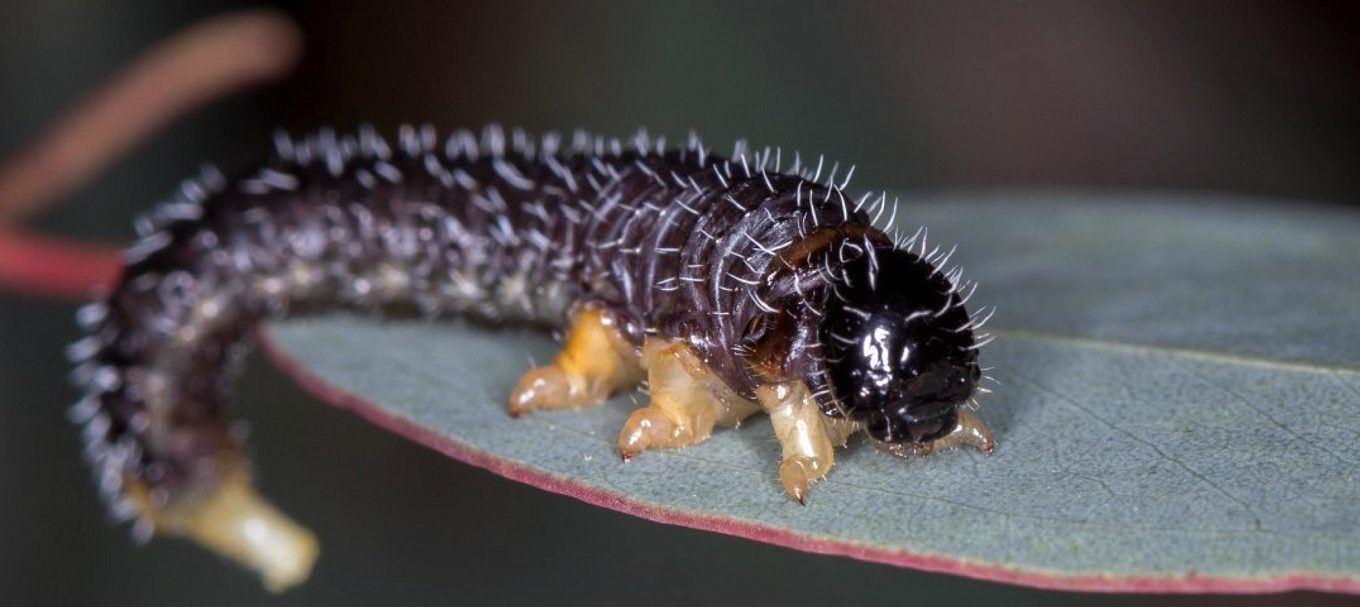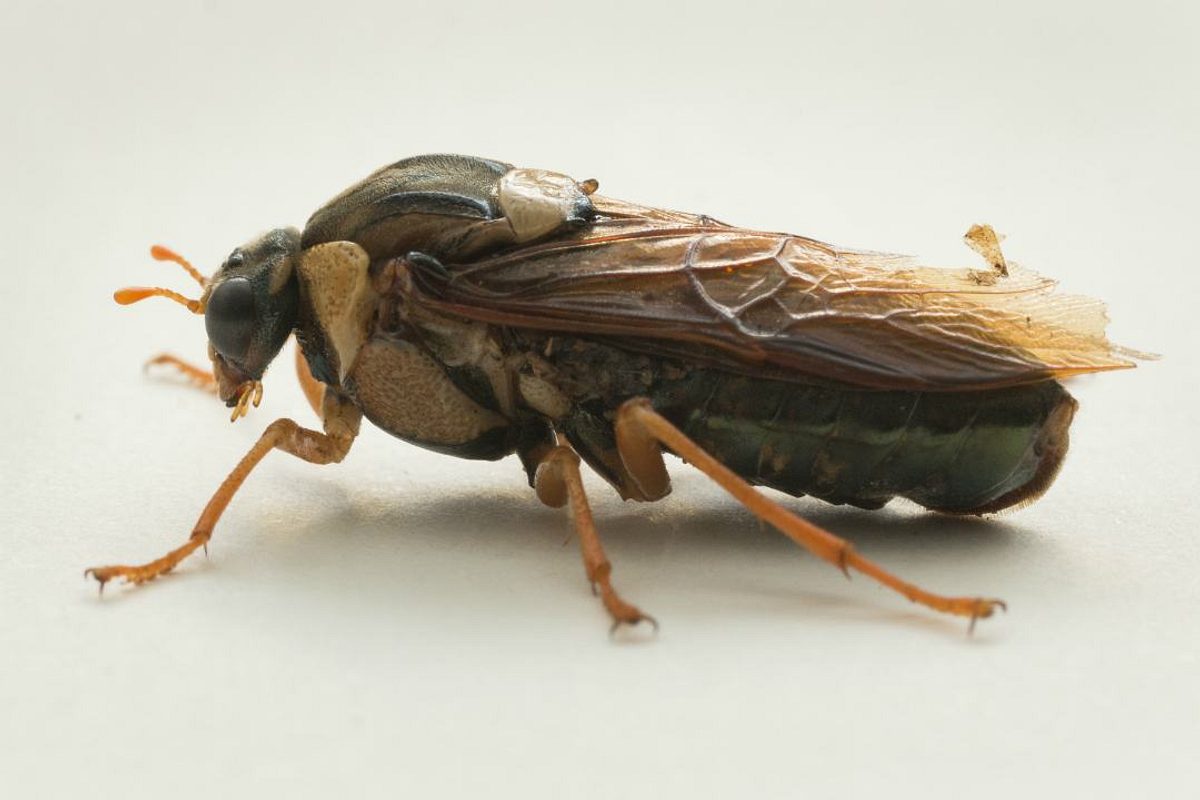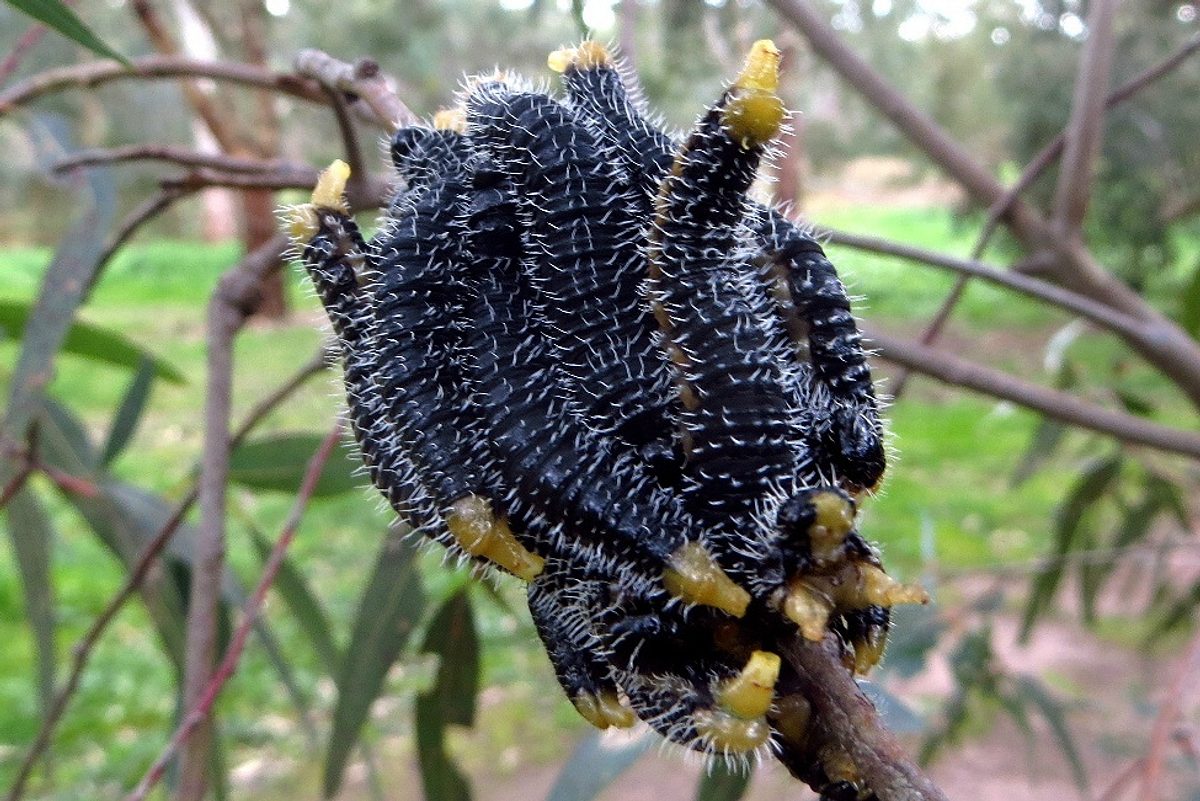
Everything you didn’t need to know about spitfire bugs
There’s nothing like climbing a sturdy gumtree, being amazed by the view and then having to scramble away from a bunch of spitfires.
The term spitfire is slang for sawfly babies, technically larvae. They are bristly black grubs that look like strange caterpillars and grow into wasps – with four wings, but without a stinger.
The most common sawfly in South Australia is the steel-blue sawfly, which can be found in open areas with lots of gumtrees. One spot you’ll see them for sure is around the Adelaide Hills.

Putting the spit in spitfire
Spitfires don’t spit or sting, they actually dribble. When threatened they wriggle their tails and regurgitate from their mouth a thick mustard-coloured goop that is made of concentrated eucalypts and looks like fire.
You might feel the fear of death if you accidently came across a cluster of these gothic-looking grubs dribbling goop. But spitfires, their goop and the grown sawfly are harmless to people and animals.
Give me a home among the gumtrees
Spitfires usually feed separately on gumtree leaves at night and during the day live in large groups – up to hundreds – clustered together on the branches of eucalypt trees. They live in these clusters to protect themselves from predators like birds.

Spitfire’s tough road to a sawfly
Despite looking a bit like caterpillars, spitfires won’t grow into butterflies, but instead they emerge as sawflies.
Most sawflies are females and lay fertile eggs without mating. Girl power!
The eggs hatch in 2 to 8 weeks to form small spitfires. Once the spitfires reach a peak size they crawl down the tree and burrow in the soil where they use their goop to create a cocoon and incubate for a few months. Then, if they’re lucky, the bug emerges as a sawfly, but only lives for around 7 to 9 days.
Wondering why it’s only ‘if they’re lucky’? It’s because of parasitic wasps. Parasitic wasps lay eggs in or on spitfires and once these eggs mature the parasitic wasps’ babies eat the spitfire. Bleak.
So buy a lotto ticket if you do in fact spot a sawfly – it might just be your lucky day.
If you want to know more about other creatures and critters that call South Australia home, make sure you browse through our library ofAnimal Encountersstories.
This story was originally posted in January 2018.





